Introduction
The Oven and Your Dinnerware: What You Need to Know
When it comes to using your oven, it’s essential to understand which dinnerware is safe for this purpose. In this guide, we’ll explore the world of oven-safe dinnerware and provide you with valuable insights into using plates and other dishes in your oven. Knowing what you can safely use will not only enhance your cooking experience but also prevent kitchen mishaps.
Understanding Oven-Safe Dinnerware
To get started, let’s clarify what we mean by “oven-safe” dinnerware. Oven-safe dishes are specially designed to withstand the high temperatures of your oven without cracking, warping, or releasing harmful substances. They open up a world of possibilities for baking, reheating, and keeping your meals warm.

Types of Oven-Safe Plates
Identifying Oven-Safe Materials
To use plates in the oven, you need to know which materials are oven-safe. Common materials include glass, ceramic, and stoneware. These materials have been carefully crafted to withstand the heat, making them suitable for oven use. We’ll delve into the specifics of each material, so you can confidently choose the right plates for your culinary adventures.
Glass, Ceramic, and Stoneware Plates: Oven-Safe Options
Glass plates are not only visually appealing but also oven-safe. They’re ideal for casseroles, roasting, and reheating.
Why Glass Plates are Oven-Safe:
Glass plates are crafted from tempered glass, which is designed to withstand high temperatures. This means you can safely transfer them from the refrigerator or freezer directly into a preheated oven without worrying about sudden temperature changes causing them to shatter. The transparency of glass also allows you to monitor your dishes as they cook, ensuring they reach the perfect level of doneness. However, it’s essential to avoid drastic temperature changes, such as placing a hot glass plate on a cold surface or vice versa, as this can still lead to breakage.
Ceramic Plates: Durability and Versatility
Ceramic plates are another fantastic option for oven use, known for their durability and ability to evenly distribute heat. They are versatile and come in various styles and designs, making them not only practical but also visually appealing.
Why Ceramic Plates are Oven-Safe:
Ceramic plates are fired at high temperatures during the manufacturing process, which makes them sturdy and heat-resistant. They can handle the heat of the oven without cracking or breaking. Their even heat distribution ensures that your food cooks uniformly, resulting in delicious and well-cooked dishes. Whether you’re baking lasagna, a gratin, or a delicious fruit cobbler, ceramic plates are up to the task.
Stoneware Plates: Earthy Charm and Heat Resistance
Stoneware plates are prized for their rustic charm and heat resistance. These plates are excellent for dishes that require extended cooking times at moderate temperatures.
Why Stoneware Plates are Oven-Safe:
Stoneware is a dense and durable clay-based material that has been fired at extremely high temperatures. This process makes it exceptionally heat-resistant. Stoneware plates can withstand the high temperatures of the oven, making them perfect for baking bread, pies, and other delectable treats. They also retain heat well, keeping your food warm even after it’s taken out of the oven, which is ideal for serving dishes at the table.
When it comes to choosing oven-safe plates, you have several excellent options. Glass, ceramic, and stoneware plates are designed to handle the rigors of oven cooking while also adding aesthetic appeal to your table. By understanding the unique qualities of each material, you can confidently select the right plates for your cooking needs. In the following chapters, we will explore more about using these materials in various oven-based recipes and offer tips for proper care and maintenance to ensure the longevity of your oven-safe plates. Stay tuned for more exciting insights into enhancing your culinary adventures!

Oven-Safe Plate Benefits
Advantages of Using Oven-Safe Plates
Using oven-safe plates offers numerous benefits for your cooking and dining experience. First and foremost is versatility. Oven-safe plates can seamlessly transition from oven to table, simplifying your serving process. They also enhance the presentation of your dishes, as you can serve meals straight from the oven. Additionally, oven-safe plates save time and effort on transferring food to separate serving dishes, reducing the number of dirty dishes.
- Effortless Cooking and Serving: One of the primary advantages of oven-safe plates is the convenience they bring to your cooking routine. You can start your meal preparation on the stovetop or in the oven, and when it’s time to finish or serve the dish, you don’t need to transfer it to another container. This not only minimizes the risk of spills but also ensures that your dish remains piping hot as you bring it directly to the table.
- Enhanced Flavor: Oven-safe plates are designed to withstand high temperatures, allowing your food to cook evenly and retain its natural flavors. Whether you’re roasting vegetables, baking casseroles, or searing meats, these plates can handle the heat, resulting in dishes that are rich in taste and texture.
- Time Efficiency: Time is often a precious commodity in the kitchen. With oven-safe plates, you eliminate the need to spend extra minutes transferring your food to serving platters or dishes. This streamlined process is especially beneficial when you’re preparing multiple courses or hosting a dinner party, as it frees up valuable time for other culinary tasks or simply enjoying your meal with guests.
- Reduced Cleanup: Oven-safe plates can go directly from the oven to the table, and many are also dishwasher-safe. This means less time spent washing additional dishes, pans, or serving platters after your meal. The reduced cleanup not only makes your life easier but also contributes to a more eco-friendly kitchen by conserving water and energy.
- Versatile Presentation: These plates come in various sizes, shapes, and designs, allowing you to choose the perfect one for each dish. The ability to present your meals attractively right out of the oven adds a touch of elegance to your dining experience. Whether you’re serving a rustic lasagna, a colorful vegetable medley, or a sizzling steak, oven-safe plates can complement your culinary creations.
- Heat Retention: Oven-safe plates are typically made from materials that retain heat well, such as stoneware or cast iron. This means that your food will stay warm for longer on the table, ensuring that everyone can enjoy their meal at their own pace without it cooling too quickly.
- Durability: These plates are designed to withstand the rigors of both the oven and daily use. They are less likely to chip or break compared to regular ceramic or glass dishes, making them a smart investment in the long run.
- Safe Cooking: Oven-safe plates are typically made from materials that are safe to use in high-temperature environments. They are free from harmful chemicals like lead or cadmium, ensuring that your food is cooked and served in a healthy and safe manner.
Oven-safe plates are a valuable addition to your kitchen arsenal. They simplify cooking and serving, enhance the flavors of your dishes, save time on cleanup, and provide a visually appealing way to present your culinary creations. Their durability and safety features make them a practical choice for both everyday meals and special occasions. So, whether you’re a seasoned home chef or a novice in the kitchen, consider adding oven-safe plates to your collection to elevate your cooking and dining experience.

Precautions When Using Plates in the Oven
Safety First: Guidelines for Oven Use
While oven-safe plates are designed to handle the heat, it’s essential to follow safety guidelines when using them in the oven. One crucial rule is to avoid extreme temperature changes, which can lead to thermal shock and potentially shatter your dinnerware. We’ll provide tips on gradually heating and cooling your plates to prevent accidents.
Avoiding Thermal Shock and Other Risks
What is Thermal Shock?
Thermal shock occurs when there is a sudden and extreme temperature change, causing the material to expand or contract rapidly. This can result in cracks, fractures, or even complete shattering of your oven-safe plates. Here’s how to avoid it:
1. Gradual Temperature Changes:
– Always preheat your oven before placing your oven-safe plates inside. Sudden exposure to high temperatures can stress the plates.
– Similarly, allow your plates to cool down gradually after taking them out of the oven. Placing hot plates on a cold surface can also cause thermal shock. A wooden cutting board or a towel can act as a buffer.
2. Use Oven Mitts:
– Protect your hands from the heat by wearing oven mitts or heat-resistant gloves when handling hot plates. This simple step can prevent burns and accidents.
3. Safe Handling Techniques:
– Never transfer a hot plate directly from the oven to a cold countertop or sink filled with cold water. This rapid temperature change can cause thermal shock.
– Use a dry towel or potholder to set the hot plate on a heat-resistant surface.
– When removing the plate from the oven, open the oven door carefully and keep your face and body away from the hot steam that may escape.
Other Risks to Be Aware Of
In addition to thermal shock, there are other risks to be mindful of when using plates in the oven:
1. Overloading the Oven:
– Avoid overcrowding your oven with too many plates at once. Overcrowding can disrupt the flow of hot air and lead to uneven heating. This can not only affect your dishes but also pose a fire hazard.
2. Placing Cold Plates on Hot Surfaces:
– Never put a cold oven-safe plate directly onto a hot stovetop or burner. The rapid change in temperature can cause the plate to crack.
3. Sudden Temperature Changes Outside the Oven:
– Be cautious when transferring plates from the oven to a cold serving area, such as a granite countertop. Use trivets or heat-resistant mats to prevent thermal shock.
By following these precautions and being aware of potential risks, you can enjoy using your oven-safe plates safely and prolong their lifespan. Remember, safety should always come first when cooking, so take the necessary steps to protect yourself and your dinnerware.

Alternative Oven-Safe Dinnerware
Beyond Plates: Oven-Safe Bakeware and Cookware
While plates are versatile and can be used in the oven for certain dishes, there is a wide world of alternative oven-safe dinnerware waiting to be explored. In this chapter, we will dive into the realm of oven-safe bakeware and cookware, which can significantly expand your cooking possibilities. Whether you’re a seasoned chef or a novice in the kitchen, these tools can add a new dimension to your culinary adventures.
Baking Dishes and Casseroles:
Baking dishes and casseroles come in various shapes and sizes, making them ideal for a multitude of dishes. From lasagnas and macaroni and cheese to roasted vegetables and fruit cobblers, these versatile dishes are designed to handle high oven temperatures. They are typically made from materials like glass, ceramic, or stoneware, which distribute heat evenly, ensuring your dishes are cooked to perfection.
Oven-Safe Skillets:
If you’re a fan of stovetop-to-oven recipes, oven-safe skillets are your best friend. These skillets are crafted with materials such as cast iron or stainless steel, allowing you to sear, sauté, and roast in the same pan. They are perfect for dishes like frittatas, steak, and one-pot wonders. Cast iron skillets, in particular, are prized for their heat retention and durability.
Dutch Ovens:
Dutch ovens are a beloved tool in the kitchen for a reason. These heavy-duty pots, often made of cast iron, have thick walls and tight-fitting lids that trap moisture and heat, creating the perfect environment for slow cooking and braising. They excel at making dishes like stews, soups, and even homemade bread. Many modern Dutch ovens come with enamel coatings, making them easier to clean and maintain.
Pizza Stones:
For pizza enthusiasts, a pizza stone is a must-have oven-safe tool. Made from materials like cordierite or ceramic, these stones mimic the cooking surface of a traditional pizza oven. They absorb and radiate heat evenly, ensuring your pizza crust is crispy and delicious. They can also be used for baking bread and other baked goods.
Roasting Pans:
When it’s time to roast that holiday turkey, a sturdy roasting pan is essential. Roasting pans are designed to hold large cuts of meat and come with a rack that elevates the meat, allowing it to cook evenly and letting the juices collect at the bottom for basting or gravy making. They are typically made of stainless steel, aluminum, or cast iron, all of which can withstand high oven temperatures.
Soufflé Dishes and Ramekins:
If you enjoy making delicate desserts like soufflés, or want to create individual portions of your favorite dishes, soufflé dishes and ramekins are indispensable. These small, oven-safe dishes are often made of ceramic or porcelain and can handle the high heat needed for recipes that require rising and browning.
Oven-Safe Glassware:
In addition to the usual suspects like baking dishes and casserole dishes, some glassware is specifically designed to withstand the heat of the oven. Pyrex and Anchor Hocking offer a variety of glass bakeware, including pie plates, loaf pans, and even glass cake pans. These are perfect for baking your favorite desserts or savory creations.
When exploring alternative oven-safe dinnerware, remember to check the manufacturer’s guidelines for temperature limits and usage recommendations. With the right bakeware and cookware in your kitchen arsenal, you can take your culinary skills to new heights and prepare a wide array of delicious dishes that go beyond what traditional plates can offer. So, whether you’re whipping up a hearty casserole, a crusty homemade pizza, or a comforting stew, these tools will become your trusted companions on your culinary journey. Happy cooking!
Conclusion
Enjoy Oven-Friendly Dining with the Right Dinnerware
In conclusion, understanding which dinnerware is oven-safe opens up a world of culinary possibilities. Whether you’re baking, roasting, or reheating, having the right dinnerware can make your cooking and serving experience more convenient and enjoyable.
Elevating Your Cooking and Presentation with Oven-Safe Plates
With the knowledge gained from this guide, you can confidently use oven-safe plates and other dinnerware to elevate your cooking and presentation. Say goodbye to unnecessary dish transfers and hello to the convenience and visual appeal of serving dishes straight from the oven.
Curious about the safety of lava lamps? Learn more in my article on ‘Lava Lamps and Fire Safety: Are They a Potential Hazard?






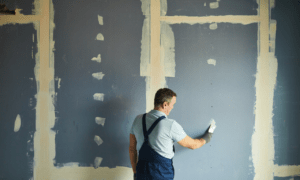
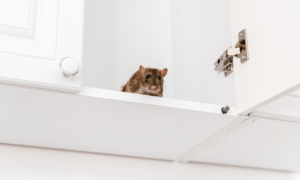

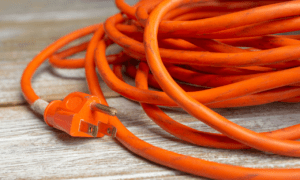

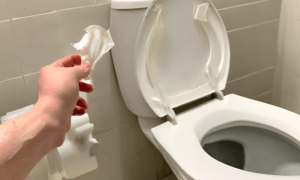

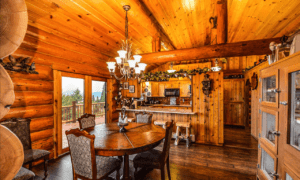
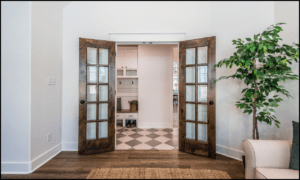

One Response
It — is healthy!